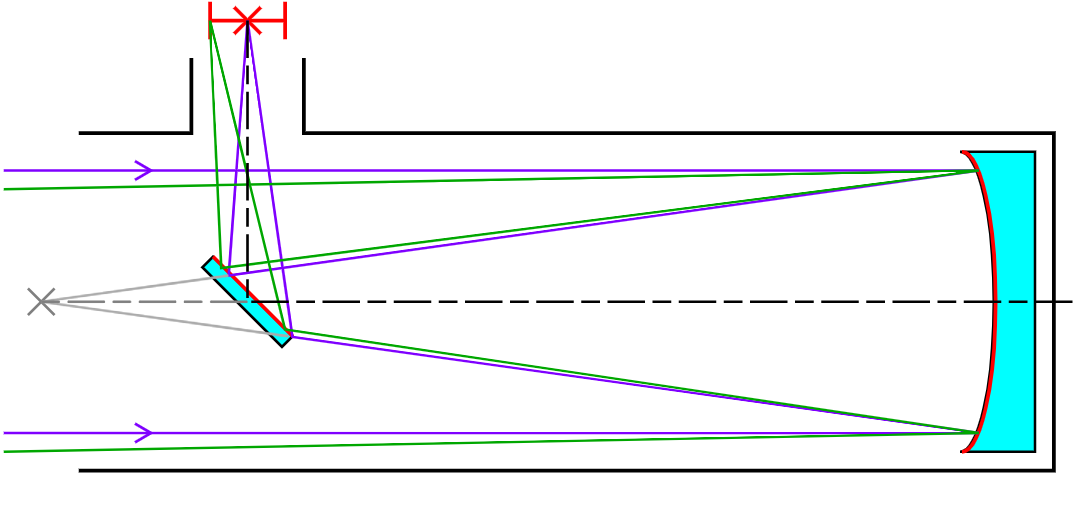Question
Question: How are concave mirrors used in telescopes?...
How are concave mirrors used in telescopes?
Solution
There are two kinds of telescopes: reflecting and refracting telescopes. Before, refracting telescopes were used mainly, but it had an error known as chromatic aberration, meaning failure of the lens to focus all the colours at a single point. This led to the use of different kinds of telescope, known as reflecting telescopes, developed by Newton in the 17th century.
Complete step by step answer:
The reflecting telescopes or Cassegrain telescopes, use the principles of reflecting in spherical and plane mirrors to focus a far-off object near the eye.
Here is a schematic picture of one such kind of reflecting telescope:

The major component of a reflecting telescope is the concave mirror.
The concave mirror is known as a converging mirror because it converges a ray of light travelling from infinity, to its focal point. Since it is a converging mirror, the concave mirror helps in converging the light from a far-off object to a point. At this point, there can be a plane mirror, as in this case, or a convex mirror for viewing by the user.
This particular type of telescope is also known as a reflector. The design of a reflecting telescope is such that it allows very huge diameter objectives. This is a main requirement in all applications of astronomy where the objective concave mirrors have very huge diameters, necessary for focussing the celestial bodies like stars or planets.
Note:
Refracting telescopes are mainly used for short-distance vision such as terrestrial vision or in cameras where there is a zoom option. This is because the huge size of the lens will result in chromatic aberration and hence, it is rarely used nowadays, for astronomical viewing.
